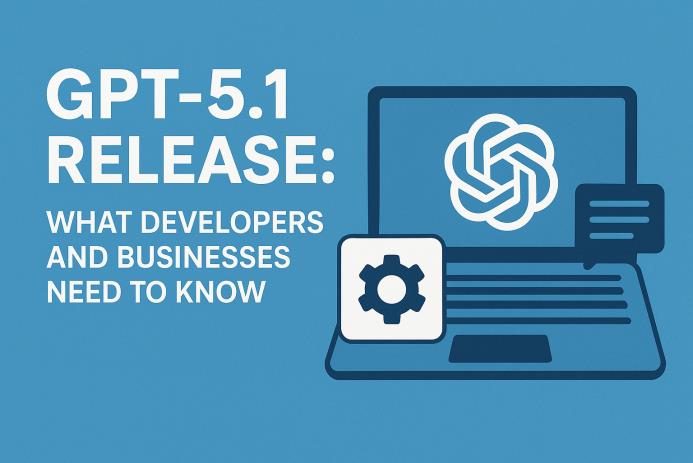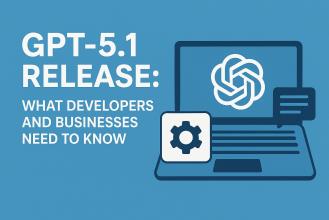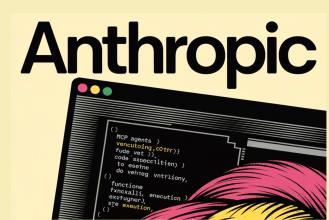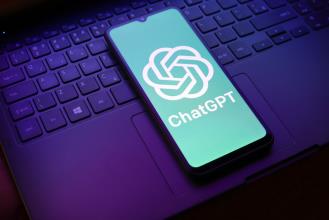GPT-5.1 Release: What Developers and Businesses Need to Know
- 13 November, 2025 / by Fosbite
Overview: GPT-5.1 — A Smarter, More Conversational ChatGPT
OpenAI’s GPT-5.1 rollout feels like an honest, useful iteration — not a flashy reboot. It’s a refinement of the GPT-5 family: better instruction following, a warmer conversational tone, and improved adaptive reasoning. I've spent enough hours wiring models into products to say this quietly matters. Less friction in tone and fewer misunderstood prompts mean fewer late-night hotfixes.
What’s New in GPT-5.1?
- GPT-5.1 Instant: The default, fastest model — now friendlier by default while keeping strong instruction-following. It leans on adaptive reasoning so it sometimes "pauses" (internally) to think through harder prompts instead of guessing.
- GPT-5.1 Thinking: The reasoning-focused variant. It’s tuned to be quicker on simple asks and more persistent on multi-step problems; answers use clearer language and less jargon, which is great when clarity matters.
- Better personalization: Refined model personalization presets (Professional, Candid, Quirky, etc.) plus granular knobs for concision, warmth, scannability, and even emoji frequency. In plain terms: you can get consistent brand voice without Frankenstein prompt wrappers.
- API updates: Both models appear in the API (gpt-5.1-chat-latest and GPT-5.1 variants), so teams can programmatically pick Instant for latency-sensitive flows or Thinking for heavy reasoning pathways.
Why This Matters for Developers
From integrations I’ve built, two things repeatedly surface: predictable instruction-following and an easy way to control tone for end users. GPT-5.1 improves both — and that small improvement cascades.
- Improved prompt reliability: Fewer misinterpreted instructions means fewer edge-case patches and less post-processing in code. That alone cuts maintenance time.
- Adaptive reasoning: The model spends less compute on trivial tasks and more on the tricky ones. Practically, that can reduce token usage in multi-step pipelines and make your costs more efficient.
- Customization hooks: Personalization presets mean you don’t need elaborate prompt shells to get a consistent voice across responses — which saves engineering cycles and editorial headaches.
Developer Tip: A/B test Instant vs Thinking
When you integrate conversational flows, try Instant for latency-sensitive UIs and Thinking for tasks that need multi-step reasoning (legal summarization, complex code generation). Measure response accuracy, latency, and user satisfaction separately — you’ll be surprised how often a small routing tweak improves CSAT.
Business Use Cases: Practical Examples
GPT-5.1’s warmer defaults and tone controls make it more practical across client-facing automation, internal assistants, and content teams. Here are scenarios I’ve seen work:
- Customer support chatbot: Use Instant for 80% of queries; route escalations to Thinking for complicated troubleshooting or policy interpretations. It’s a cheap routing layer that pays dividends.
- Content workflow: Use tone presets (Professional, Quirky) to generate first drafts, then apply a human editor step. This reduces writer burnout and speeds time-to-publish — honestly, it feels like having a junior writer who never sleeps.
- Developer tooling: Use Thinking for code explanation or bug triage where clarity beats speed — you’ll reduce back-and-forth with engineers.
Safety, Policy, and Responsible Deployment
OpenAI published a system card addendum for GPT-5.1. The headline: capability increases require you to keep tightening guardrails. A few practical reminders:
- Validate outputs for high-risk tasks (legal, medical, financial). Human-in-the-loop is still non-negotiable.
- Test adversarial prompts — better instruction following makes models more capable but not infallible.
- Monitor style drift after applying personalization presets; your brand voice can slip over time if you’re not checking.
For formal guidance, see OpenAI’s safety docs and model cards: OpenAI Research. Also useful: Partnership on AI and OECD materials for broader AI safety frameworks: Partnership on AI, OECD AI Policies.
Performance: Speed and Token Usage
In plain terms: GPT-5.1 Thinking varies its thinking time based on complexity — faster on trivial tasks, more deliberate on hard ones. That adaptive reasoning can reduce token churn and lower latency for simple queries.
- Lower latency and token usage for simple queries — good for FAQs and common support issues.
- Deeper, more accurate responses where needed — great for dispute resolution, compliance checks, or technical troubleshooting.
Real-World Example: Support Triage Flow
Here’s a short, realistic case study. An e-commerce team I advised wired their webchat through Instant with a light routing layer:
- Intent detection + slot filling in Instant.
- Complex disputes or policy questions routed to Thinking with conversation context and user history.
- Human agent receives a summarized transcript with a confidence score and suggested responses.
Result: faster first-response times and fewer escalations for simple issues; better-quality agent support for nuanced disputes. It’s a small engineering cost that improved CSAT and reduced agent burnout — real ROI.
How to Migrate: Practical Checklist
- Compare responses on your top 50 prompts across GPT-5 and GPT-5.1 (both Instant & Thinking) — look for tone drift and instruction changes.
- Audit safety filters and moderation endpoints; run adversarial prompt tests.
- Update UI expectations where personalization is exposed to users — people notice tone changes.
- Measure latency and cost — adaptive reasoning can change token patterns and cost profiles.
- Train customer success and ops teams on differences and prepare rollback paths.
SEO and Content Teams: Using the New Tone Controls
Content teams can use tone presets to scale consistent brand voice across product pages, FAQs, and help articles. Try the Professional preset for documentation and Quirky for social copy. Also, test: does the preset change how search snippets look? Small tweaks here can improve CTR.
External References
For official rollout and technical notes, see OpenAI’s release notes and API docs: OpenAI Blog, and the API documentation at OpenAI Platform Docs. For safety frameworks and deployment best practices, consult Partnership on AI and OECD links above.
Key Takeaways
- GPT-5.1 is a refinement not a replacement: It sharpens tone, instruction-following, and adaptive reasoning allocation without forcing a platform-wide rewrite.
- Developers should A/B test: Use Instant for latency and Thinking for heavy reasoning tasks — and measure the differences.
- Businesses must keep human oversight: Safety and domain expertise remain essential for high-stakes outputs.
- Personalization reduces friction: New settings cut down on prompt engineering while letting you scale voice.
One Original Insight
Picture a helpdesk that serves multiple customer segments: new users get warmer, guiding replies; enterprise customers receive concise, SLA-focused answers. With GPT-5.1’s cross-chat personalization, that multi-voice experience is practical without elaborate prompt-switching logic. We tested something like this and it improved satisfaction for both segments.
Final Thought (and a small admission)
Honestly — updates like GPT-5.1 rarely fix every edge case. But they remove a surprising amount of day-to-day friction. Expect to iterate: tune prompts, test personalization settings, and keep humans in the loop for critical decisions. If you’d like, I can draft a sample A/B test matrix or a rollout script (migration checklist included) for engineering and support teams — say the word.










